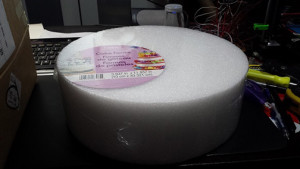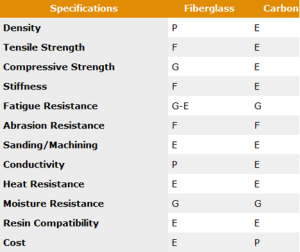New Components, Part 3
By Tuan Vo, Project Manager
Material of aircraft:
To build the body of the aircraft, we have decided to go with plastic foam. A 12”diameter X 4”high wheel of foam weighs in at 98grams. We will cut the foam to mount the fans and components using a hot knife. In this project, one of the basic and most important requirement is to make the aircraft look like a UFO. Foam would be ideal when considering cost, weight, and level of skill during fabrication.

The outside shell will have to be lightweight yet rigid enough to protect the aircraft. There are two materials we can use that has the two characteristics: fiberglass and carbon fiber. Both materials will have to be molded with a resin and hardener chemical reaction.
Below is a qualitative comparison between fiberglass and carbon fiber, taken from Fibre Glast Company.
The legend is as follows: P=Poor, F=Fair, G=Good, E=Excellent.

Although the cost of production for carbon fiber is higher than fiberglass, the stiffness to weight ration of carbon fiber is superior. Weight reduction is what we need, and the cost to produce the parts for this aircraft is not too big and within budget.
The carbon fiber we are using is 2×2 twill woven with thickness of .012 inch thickness. One sheet of CF should be able to provide the rigidity we need. However, we will be using two layers just to ensure
